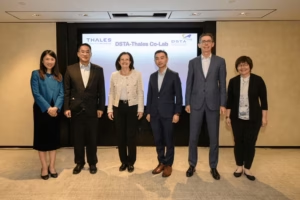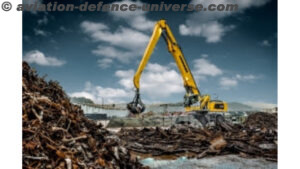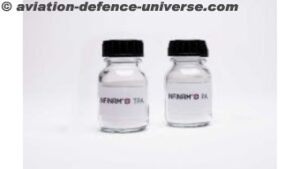Energy Security
DAE progressively pursues the indigenous three-stage Nuclear Power Programme and thereby contributes in the energy-mix options of India by, as envisioned by Dr. Homi Jehangir Bhabha, and also through additionalities based on international civil nuclear cooperation.
- There are 21 nuclear power reactors with a total installed generating capacity of 5680 MW of electricity. The Nuclear Power Corporation of India Limited (NPCIL) achieved a power generation of 36,826 Million Units from 01-01-2015 to 15-12-2015, with overall capacity factor of 77% and availability factor of 79% during the same period.
- Currently 10 more reactors are under construction that will result in an additional capacity of 7,700 MWe thereby taking the total installed capacity to 13,380 MWe when completed.
- Land acquisition is in progress for the two new sites at Chutka in Madhya Pradesh and Mahi Banswara in Rajasthan.
- The Indian Insurance Pool (INIP) with a capacity of Rs 1500 crore to provide insurance to cover the liability as prescribed under Civil Liability for Nuclear Damage Act 2010 was launched in June 2015 by M/s General Insurance Corporation of India.
Government’s Initiatives to Give a Boost to the Civil Nuclear EnergySsector in India
- Understanding on CLND Act of India and its provisions arrived at between India and USA. Also, text of Administrative Arrangement finalised between India and USA under the India – USA Civil Nuclear Cooperation Agreement.
- Inter-Governmental agreement with Sri Lanka for cooperation in peaceful uses of Nuclear Energy in February 2015.
- Pre-Engineering Agreement signed between NPCIL and AREVA company of France
- Supplement to General Framework Agreement with Russian Federation in respect of Kudankulam Units-3&4, formulation of vision document on future cooperation with Russian Federation.
- Efforts to develop and manufacture indigenous components and some critical large size equipment for our 700 MW indigenous Pressurised Heavy Water Reactors (PHWR), in line with “Make in India” goal, by DAE units.
- The Government has made significant efforts in augmenting fuel supplies from both domestic and foreign sources, thus easing out the fuel-constrained position to a large extent. In this context, during Prime Minister Shri Narendra Modi’s visit to Canada in April 2015, an agreement was entered into for supply of 3000 tonnes of Uranium ore concentrate over 5 years.
- MOU between India and Japan concerning the Agreement on Cooperation in the Peaceful Uses of Nuclear Energy, December, 2015.
- The Atomic Energy Regulatory Board (AERB) signed international arrangements to cooperate and exchange nuclear regulatory information with the Canadian Nuclear Safety Commission (CNSC) in September 2015.
- A Nuclear Cooperation Agreement (NCA) has been signed between India and UK in October 2015.
- An MoU has been signed between the Department of Atomic Energy of the Government of India and the Department of Energy and Climate Change of the Government of United Kingdom of Great Britain and Northern Ireland concerning Cooperation with the Indian Global Centre for Nuclear Energy Partnership (GCNEP).
- The Inter-Governmental Agreement signed between India and Australia in September 2014, has come into effect. The Administrative Arrangements between India and Australia have been completed recently in November 2015.
- DAE is in the process of setting up a Virtual Centre for Thorium Advanced Research. Recently in October 2015, India hosted the International Thorium Energy Conference (Th EC) in Mumbai. India was also awarded the Thorium Energy Prize 2015.
DAE’s Technologies for Societal Benefits
- One Bhabhatron Unit has been installed recently in November 2015 in Mongolia under an agreement signed between TMC and National Cancer Centre of Mongolia, during the visit of Prime Minister Shri Narendra Modi to Mongolia in May 2015.·
- Vitrified Cesium-137 pencil, first-of-a-kind in the world, developed by BARC by recovery from High Level Waste. First set of 10 pencils delivered for use in Blood Irradiator units produced by BRIT-DAE.
- Technologies developed by DAE help enhancing the environmental safety, and in turn, support the Swachch Bharat Abhiyaan. Eight BARC biogas plant, Nisargruna, for processing bio-waste for production of energy or cooking gas, have been installed this year, taking the total of such plants to 198. BARC has demonstrated radiation hygienisation of urban sewage sludge for safe disposal, and scope to use the resultant bi-product as organic manure. A radiation plant to more efficiently hygienise dry sewage sludge is planned to be set up in Ahmedabad.
- DAE is participating in water quality analysis aspects, as technology provider-cum- adviser in support of Clean Ganga project.
- DAE has initiated the process for acquiring Associate Membership of CERN-LHC, with which DAE Units have active ongoing collaboration. This has been approved by the Union Cabinet.
The motto of the Department of Atomic Energy (DAE) is ‘Atoms in the Service of the Nation’, and towards this it is consistently delivering the benefits of nuclear science and technology in six broad areas: energy security, food security, water security, health security, national security, and developing and sustaining world class scientific and technological strength through research, education and industry. The Government and DAE look forward to taking the Indian nuclear programme to greater heights and continue rendering valuable service to society towards sustainable all-round national development.






























































































































